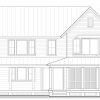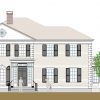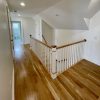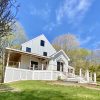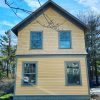We recently visited Scottsdale, Arizona and visited the home of architect Frank Lloyd Wright at “Taliesin West.”
Taliesin West was his winter home and school in the desert from 1937 until his death in 1959 at the age of 91. Today it is the main campus of the Frank Lloyd Wright School of Architecture and houses the Frank Lloyd Wright Foundation. The structure was designated a National Historic Landmark in 1982.
Many of Wright’s most famous buildings were designed in the drafting room at Taliesin West, including the Guggenheim Museum in New York City and Grady Gammage Auditorium atArizona State University in Tempe.
The structure’s walls are made of local desert rocks, stacked within wood forms, filled with concrete. Wright always believed using the materials readily available opposed to those that must be transported to the site. In Wright’s own words, “There were simple characteristic silhouettes to go by, tremendous drifts and heaps of sunburned desert rocks were nearby to be used. We got it all together with the landscape…”The flat surfaces of the rocks were placed outward facing and large boulders filled the interior space so concrete could be conserved.
Natural light also played a major part in the design. In the drafting room, Wright used translucent canvas to act as a roof (later replaced by plastic because of the intense wear from the Arizona sun). In the south-facing dining room, Wright did not take the masonry walls from floor to ceiling, and designed the roof to hangover passed the walls preventing unwanted sun rays from penetrating but allowing for horizontal light to pass through the room. Wright believed natural light aided the work environment he had his apprentices in keeping the inside of his building in touch with the natural surroundings.
Every part of Taliesin West bears Frank Lloyd Wright’s personal touch. Upon every return after a summer in Wisconsin Wright would grab a hammer and immediately make his way through the complex. He would walk through each room making changes or shouting orders to apprentices closely following with wheelbarrows and tools. He constantly changed and improved on his design fixing arising problems and addressing new situations. Throughout the years he added an addition to the dining room, the cabaret theatre, music pavilion and numerous other rooms. All of the furniture and decorations were designed by Wright and the majority built by apprentices. One of the most brilliant aspects of Wrights design is the cabaret theatre. Built with six sides, out of the standard rock, concrete mixture, in an irregularly hexagonal shape, the theatre provides its occupants with 95 percent acoustic perfection. One sitting in the back row can hear the lightest whisper from a speaker on stage.
Enjoy some these pictures from the trip!
[thumbnails width=”125″ height=”125″]


